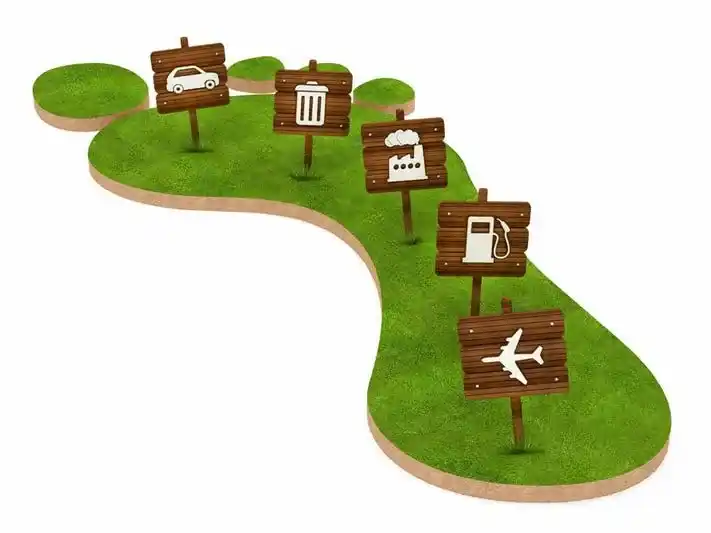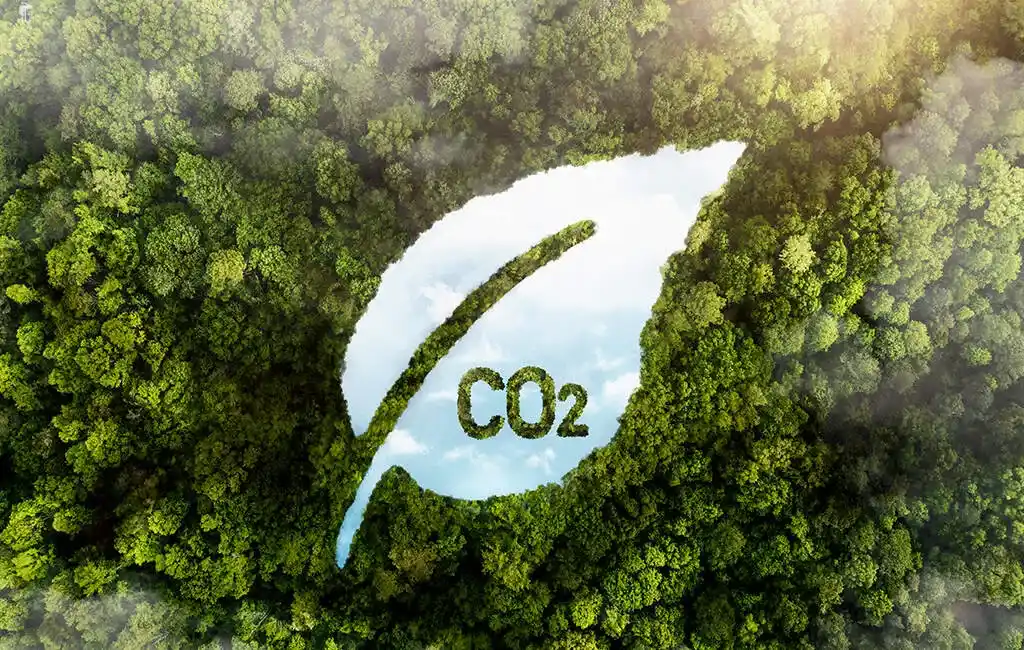- 021-91034194
- Info@pishco.ir
- Tehran, Sa'adat Abad
Home » Carbon footprint and how to reduce it
A carbon footprint is the total amount of greenhouse gas emissions created by an organization, event, product, or person. A lot of evidence shows that the climate changes caused by these emissions have caused serious concerns for the human future; For this reason, a concept called carbon footprint has been created.
The concept of carbon footprint is the total amount of greenhouse gas emissions (GHG) created by an organization, event, product or person. With this definition, the exact calculation of the carbon footprint is not completely possible due to the large volume of data and the problems related to the separation of natural carbon dioxide emissions. Based on this, a new definition for carbon footprint is proposed: “A measure of the total output of carbon dioxide (CO2) and methanol (CH4) related to a specific population, system or activity, taking into account all sources, storages and sinks in The relevant time and place”.
The concentration of carbon dioxide in the atmosphere has reached its highest level in the last sixty and fifty thousand years and is seriously increasing. Drought, famine, and rising ocean levels are just some of the predicted consequences of increasing greenhouse gas emissions. According to the report of the Climate Change Convention, in 2017, Iran was the seventh country in the world in terms of carbon dioxide gas production.
Greenhouse gases are transferred to the atmosphere through activities such as transportation, mining, production of agricultural products, energy, construction materials, wood, roads, buildings, and services, and for convenience, they are often reported as carbon dioxide equivalent. The term carbon footprint is actually derived from the term “ecological footprint” which was used in the 1990s and meant the need for the earth’s resources in the amount consumed by each person on the planet. However, the carbon footprint specifically measures the amount of greenhouse gas emissions into the atmosphere and is directly linked to climate change.

In other words, the carbon footprint, which includes the total amount of greenhouse gases such as carbon dioxide and methane that are produced due to human activities, is divided into two main parts. The “direct” sector includes emissions that result directly from the combustion of fossil fuels in industry, heating, transportation, and power generation to provide goods and services. The “indirect” sector includes emissions that are consumed in the production of goods and services and in processes that take place further away from the final consumer, such as daily life, consumption of energy resources, and housing.
The average carbon footprint in the world is about 4 tons per year for each person, while in our country this amount is about 8 tons. The differences in this average show that the level of development and use of resources in different countries has a great impact on the carbon footprint.
Climate changes also caused by increased carbon dioxide concentration in the atmosphere, such as droughts, famines, and rising ocean levels, are only part of the predictable effects of increasing greenhouse gas emissions. According to the Climate Change Convention, in 2017, Iran was the seventh country in the world in producing carbon dioxide gas.
The transportation sector, which accounts for the largest share of greenhouse gas emissions, comes from fossil fuels such as gasoline and diesel fuel used in vehicles such as cars, trucks, ships, trains, and airplanes.
Household carbon footprints are divided into direct and indirect sources: “indirect” sources, which are larger than the carbon footprint of typical households, include outputs from fuels used to produce goods that are produced further away from the final consumer. The “direct” portion includes emissions that result from fuels used in vehicles or consumer home stoves. The average carbon emission of an American household is about 50 tons of carbon dioxide per year, and most of it is produced from indirect sources. This number is about 5 times the global average, which is estimated to be about 10 tons of carbon dioxide per household per year.
To calculate a carbon footprint, businesses must prepare a greenhouse gas inventory to measure their carbon emissions. Having specific protocols for greenhouse gases helps companies understand the principles of calculation, locate emission sources, and examine emission trends over time.
In addition to these protocols, there are other tools for this. For example, the EPA’s Climate Leadership Center has provided a four-step protocol to help companies begin calculating their carbon footprint. In the first step, organizations must understand their emission calculation methods, define their operational boundaries, and select a specific business year for data collection. In the second step, they must collect the required data on their greenhouse gas emission trends. Then, in the third step, businesses should create an inventory management plan and document the data collected. Finally, they can report the collected data publicly and clearly state their goal of reducing emissions in the future.

To reduce carbon emissions, common strategies include reducing consumption, reusing and recycling materials. In the industrial sector, recycling packaging materials and selling old stocks to other industries can be effective. In households, using reusable containers such as flasks for coffee or cold drinks instead of disposable containers is one of the ways to reduce carbon emissions. Also, reducing driving by using bicycles, walking or using public cars can reduce fuel consumption and lower carbon emissions.
To reduce carbon emissions in families, it is also useful to use less air conditioners or heating systems. By insulating the walls or sealing around the doors and windows, you can reduce your home heating costs. Also, wearing warmer clothes can help you use less energy to heat your home.
One of the effective ways to compensate and reduce the carbon footprint is to plant trees or saplings in the garden or yard. This action not only helps to compensate for greenhouse gases, but also helps to preserve the environment. For example, “Iran Sabz” company has been active in sapling and tree planting campaigns for several years and has planted thousands of saplings all over the country. People can participate in these activities and help reduce carbon emissions by participating in these campaigns and planting saplings with their names or those of their loved ones.
Diet choices also have a large impact on carbon emissions. Consumption of animal proteins, especially red meat, rice with high methane emissions, and food transported long distances can lead to increased carbon emissions. Replacing at least one-third of animal protein with vegetable protein can help reduce carbon emissions by half.
The use of public transportation and the planting of afforested trees are also proposed as solutions including individual carbon adjustment.
The skin becomes dry and dehydrated due to the lack of water and moisture in its surface layers. Glycerin and other moisturizing agents help to absorb moisture deep into the skin by creating a layer of fat on the skin and in fact maintain the moisture of the skin and prevent it from becoming dehydrated. Also, due to the softening properties of glycerin, placing this compound on the horny layers of the skin leads to its softening and the separation of dead skin cells over time.
Glycerol is a sweet-tasting, odorless polyol molecule. Due to the very high polarity of this molecule, it is soluble in water and other polar solvents. The combination of the hydroxyl group (-OH) of glycerol with the carboxyl group of fatty acids (COOH) provides an ester bond that leads to the formation of triglyceride compounds, which are the precursors of soap production. The term “glycerin” is used commercially for products containing more than 95% glycerol.
لطفا فرم زیر را به دقت پر کنید تا مشاورین ما در اسرع وقت با شما تماس حاصل فرمایند.
Please fill out the form below carefully so that our consultants will contact you as soon as possible.